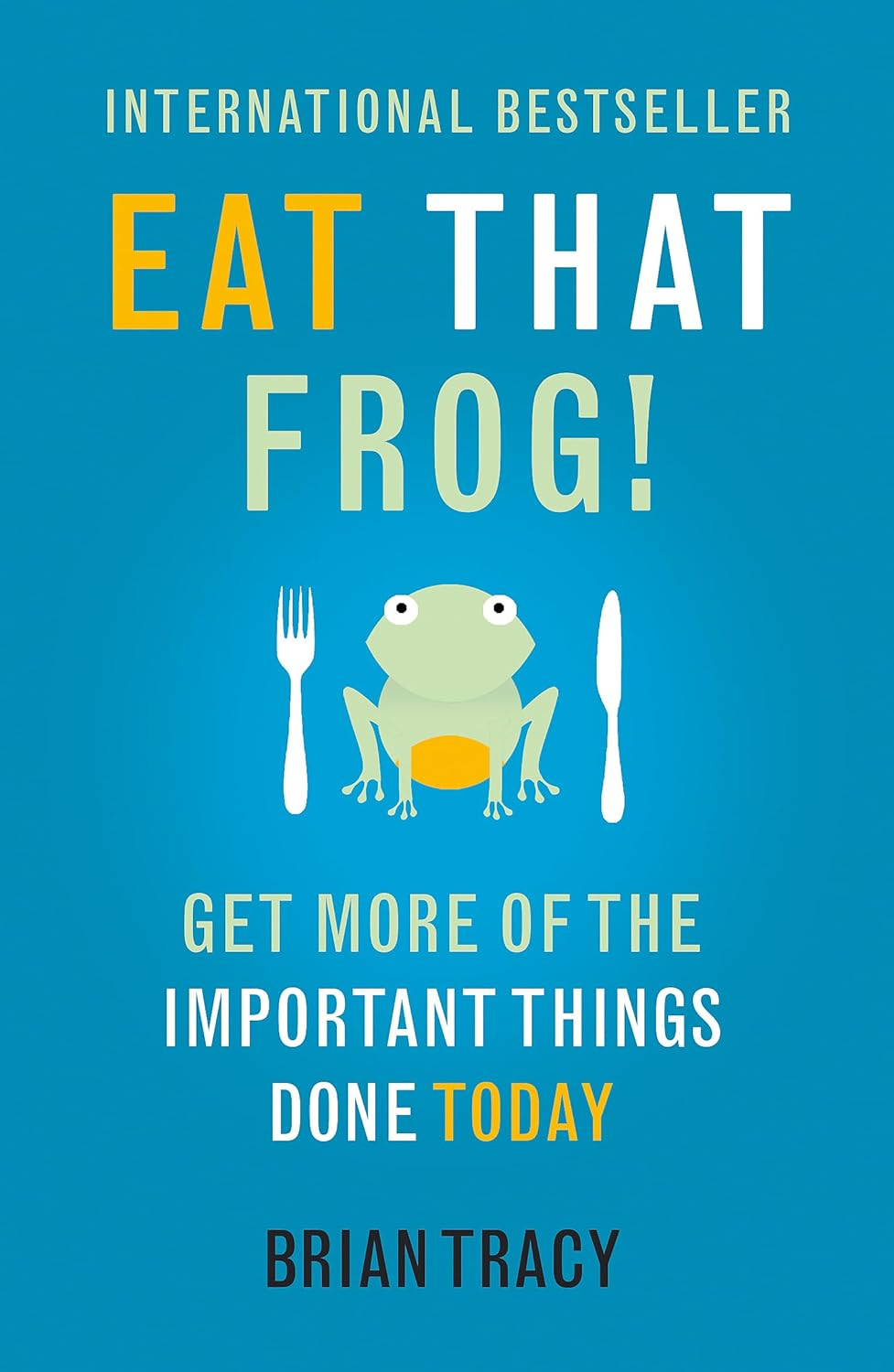This is part of my "Book in a Post" series where I extract the core concepts from management books so you can get 90% of the value in under 10 minutes. If the ideas resonate, you'll know it's worth reading the full book.
"If the first thing you do each morning is to eat a live frog, you can go through the day with the satisfaction of knowing that it's probably the worst thing that's going to happen to you all day." - Mark Twain
This quote forms the foundation of Brian Tracy's productivity book "Eat That Frog," and honestly, it's the one genuinely distinctive insight worth taking from the entire book. Let me save you the time and money by distilling the essential wisdom into this short post.
The Core Principle: Do The Worst Thing First
The "frog" is your biggest, most important, most daunting task – the one you're most likely to procrastinate on. It's also usually the one task that can have the greatest positive impact on your progress.
Why does this approach work so powerfully?
It leverages your peak willpower hours - Most of us have the most mental energy early in the day.
It creates momentum - Completing your hardest task creates a wave of accomplishment that propels you through smaller tasks.
It prevents day-long dread - That looming task drains your mental energy even when you're doing other things.
It bypasses analysis paralysis - Instead of overthinking, you jump straight into action.
In my own experience, nothing affects my productivity more than whether I tackle my "frog" first thing or push it off. On days I eat the frog immediately, I feel in control and effective. On days I don't, I find myself engaging in what Tracy calls "creative avoidance" – looking busy while tactically avoiding important work.
The Standard Framework (Nothing New Here)
To be completely honest, the rest of the book contains fairly standard productivity advice you've likely encountered elsewhere. If you've read other productivity books, you can safely skip this section. If not, here's the quick summary:
Prioritize ruthlessly the 80/20 rule or similar (focus on the 20% of tasks that deliver 80% of results)
Break big tasks down into smaller, manageable chunks
Plan your day the night before
Focus on high-value activities with significant long-term consequences
Use the ABCDE method to rank tasks by importance and consequences
All solid advice, but nothing revolutionary if you're familiar with productivity literature.
My Personal Adaptation: Two Simple Practices
What has worked for me is simplifying all of this into two practical habits:
Frog Awareness: Each morning, I ask myself: "What's the one task I'm most likely to procrastinate on Today that would make the biggest difference if completed?" That's Today’s frog. (N.B. The book recommends doing this the night before and I imagine it would work well if I did that, but I find I’m never able to build and hold that habit.)
Frog-day morning ritual: When I have a big frog that I know I don’t want to do (these ones I usually do know about the day before!) I block myself time and don’t allow myself “interrupts” like e.g. checking my phone or my email before I’ve worked on the frog for at least an hour. Frequently that hour naturally turns into more once I’m in flow.
The Bottom Line
The simple genius of "Eat That Frog" isn't in fancy techniques or complex frameworks or indeed in most of the book. It's in the simple, powerful image of tackling your worst task first thing – before distractions and willpower depletion set in.
Try it tomorrow. Identify your frog tonight. Eat it first thing tomorrow morning. Notice how different your day feels when your most challenging task is already behind you.
---
Thanks for reading! Subscribe for free to receive new posts and support my work.





